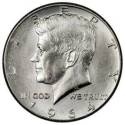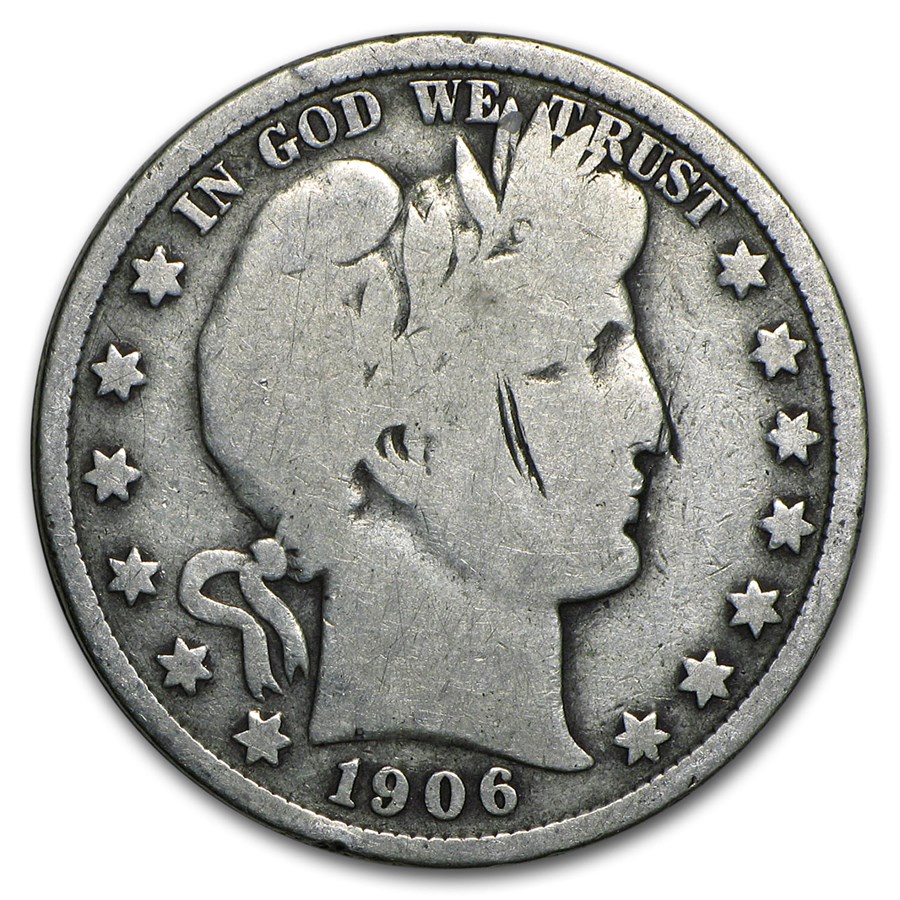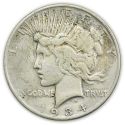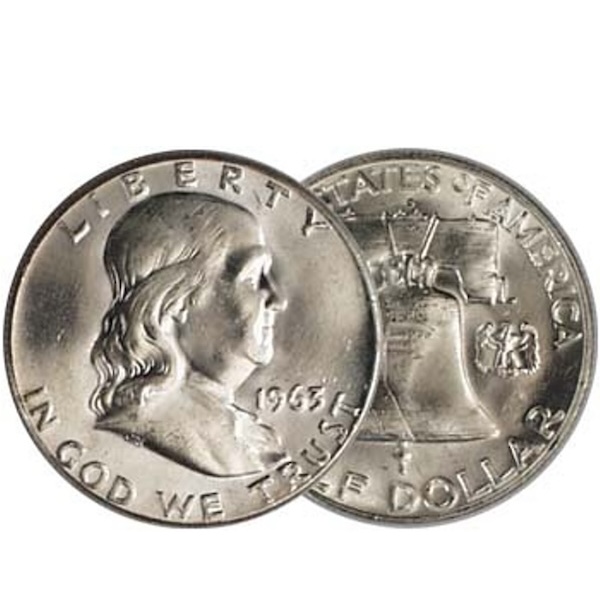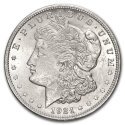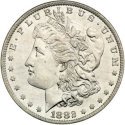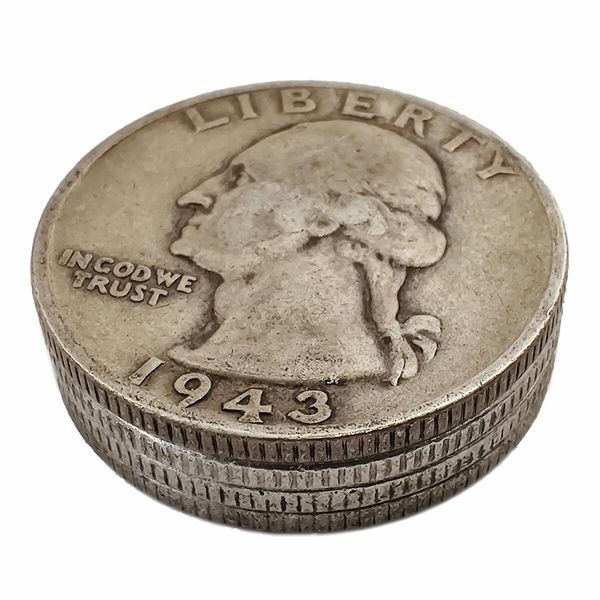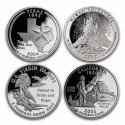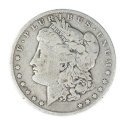1921-1935 Peace Dollar Melt Value
Determining the current price of silver coins is a straightforward process once you know the silver content of the coin and the current market price, often referred to as the silver spot price.
US Mint Silver Coin Melt Values
| Description | Face Value | ASW | Melt Value | Per $1 Face | Per Bankroll | |
|---|---|---|---|---|---|---|
| Peace Dollar | 1921-1935 Peace Dollar | $1.00 | 0.77345051 | $56.21 | $56.21 | $562.14 |
1921-1935 Peace Dollar
The Peace Dollar, minted from 1921 to 1935, was designed by Anthony de Francisci to symbolize peace after the devastation of World War I.
The Peace Dollar was the last U.S. silver dollar intended for circulation and contains 90% silver, making it valuable for its silver content and numismatic significance.
Design and Specifications
- Obverse (front): The profile of Lady Liberty wearing a radiant crown, modeled after Anthony de Francisci's wife, is featured.
- Reverse (back): Depicts a bald eagle perched on a rock, holding an olive branch, with the word "PEACE" inscribed below.
- Weight: 26.73 grams
- Composition: 90% silver, 10% copper
- Silver Content: 0.7734 troy ounces of pure silver
- Diameter: 38.1 mm (1.5 inches)
- Edge: Reeded
- A standard silver dollar bankroll contains 20 coins, equivalent to $20 face value, and 15.468 troy ounces of silver.
Mint Marks and Mints
- Philadelphia (no mint mark)
- Denver ("D")
- San Francisco ("S")The mint mark, when present, is located on the reverse just below the eagle's tail feathers.
Key Dates and Rarity
Specific years and mint marks of the Peace Dollar are more valuable due to their low mintage or condition rarity. Here are some key dates and varieties:
- 1921 High Relief: This was the first year of the Peace Dollar series, struck in high relief, making it highly sought after by collectors.
- 1928-P: Known for its low mintage, the 1928 Peace Dollar from the Philadelphia Mint is the rarest regular-issue coin in the series and is especially valuable in higher grades.
- 1934-S: Another key date with a relatively low mintage, making it one of the more valuable Peace Dollars, particularly in high grades.
Value Calculation
A Peace Dollar's value depends on its silver content and numismatic value. Here's how to calculate the intrinsic silver value:
For example, if silver is priced at $25 per troy ounce:0.7734 × $25 = $19.34 (silver melt value).
However, in good condition, most Peace Dollars have significant collector value beyond their silver content.
Special Editions and Proof Coins
No Proof Coins were issued for circulation during the original production run from 1921 to 1935. However, some 1921 and 1922 high-relief coins were struck as proofs for presentation purposes, and these are extremely rare and valuable.
In 2021, to celebrate the centennial of the Peace Dollar, the U.S. Mint released a special 2021 Peace Dollar in a high-relief design, but this is a modern issue and not part of the original series.
Values in Various Conditions
For common-date Peace Dollars (non-key dates), values typically range based on condition:
- Good (G) to Fine (F): $25-$35 (close to silver melt value for common dates)
- Very Fine (VF): $35-$50
- Extremely Fine (XF): $50-$75
- About Uncirculated (AU): $75-$125
- Brilliant Uncirculated (BU/MS60-MS63): $125-$200 for common dates
- MS64-MS65: $200-$400 for common dates in higher mint-state grades
Key Dates and High-Grade Examples
- 1921 High Relief Peace Dollar:
- In Good (G) condition, it's worth around $100-$150.
- In Mint State (MS64-MS65), it can fetch $2,000-$3,000+.
- 1928-P (Key Date):
- In Good (G) condition, it's worth around $300-$400.
- In Mint State (MS65), it can be worth $5,000-$6,000 or more.
- 1934-S Peace Dollar:
- In Good (G) condition, it's worth $50-$100.
- In Mint State (MS65), it can fetch $3,000-$4,000+.
Auction Records
High-grade Peace Dollars and rare varieties have commanded significant prices at auction:
- 1922 High Relief Peace Dollar (MS67): Sold for $132,250 at auction in 2014.
- 1921 Peace Dollar (MS66+): Sold for $120,000 in 2021.
- 1928-P Peace Dollar (MS66): Sold for $89,125 at auction in 2005.
Investment Potential
Peace Dollars are considered a solid investment for several reasons:
- Silver Content: As 90% silver coins they have intrinsic value that rises and falls with the price of silver, providing a hedge against inflation.
- Numismatic Value: Many Peace Dollars, especially key dates like the 1921 High Relief and 1928-P, carry significant premiums due to their rarity and collector demand. Even common dates in high mint-state grades can be valuable.
- Historical Appeal: The Peace Dollar commemorates the end of World War I and has artistic and historical significance, making it appealing to collectors and investors alike.
- Limited Supply: The Peace Dollar series was short-lived, making it more desirable as an investment than other longer-running coin series.
While less widely collected than the Morgan Dollar, Peace Dollars are gaining popularity, and key dates or high-grade examples can be appreciated over time.
The 1921-1935 Peace Dollar is a valuable and historic coin series that appeals to collectors and investors. Its value depends on silver content and numismatic factors, with key dates and high-grade coins commanding significant premiums. While finding them through coin roll hunting is rare, they are widely available through dealers, and certain coins from the series offer strong investment potential.
